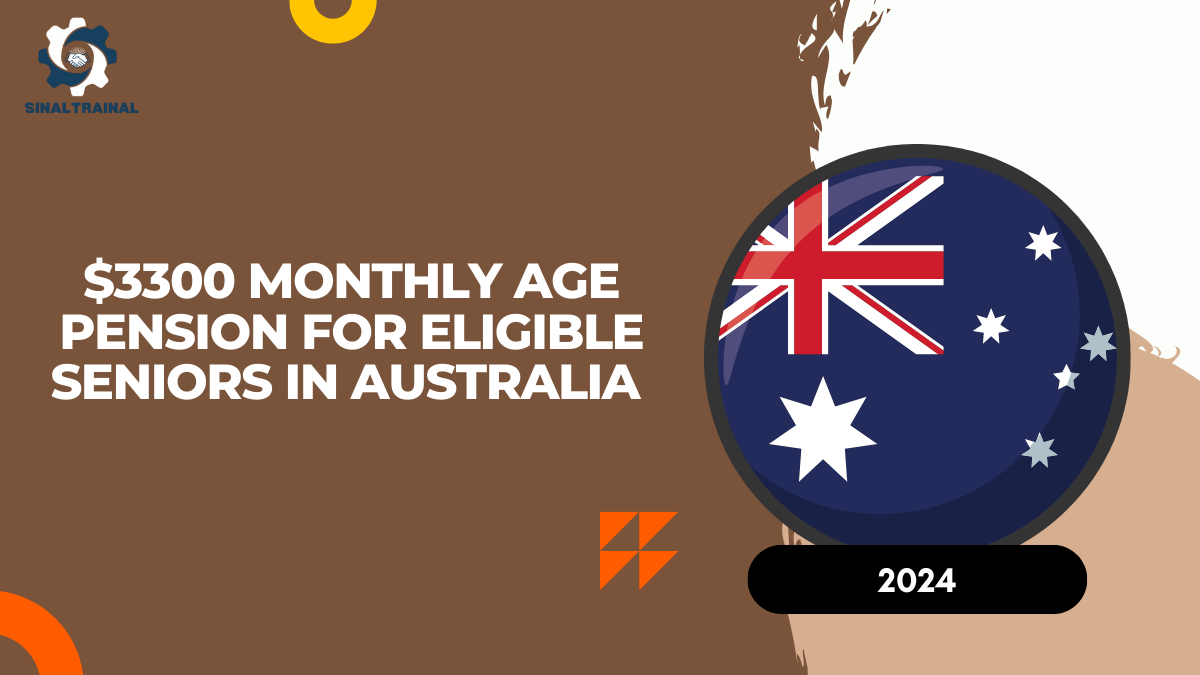This article delves into the topic of a potential $3300 monthly Age Pension for eligible seniors in Australia. We will explore what is known so far, who may be eligible for this additional financial support, when it could be rolled out, and the impact it could have on current-age pension recipients.

$3300 Monthly Age Pension for Seniors: What We Know So Far
In 2024, the Australian Government reportedly announced a proposal to introduce an extra $3300 monthly payment for eligible seniors already receiving Age Pension benefits. This initiative aims to provide increased financial support to older Australians, assisting them with essential expenses such as housing, food, healthcare, and other living costs.
Currently, single retirees are eligible to receive up to $204 per 2 weeks. However, married couples may receive up to $360 per 2 weeks before their pension payments are reduced as a result of means testing. The proposed $3300 payment would substantially enhance this support, providing a more significant financial safety net for older Australians. It’s important to note that although this payment has been under discussion, there has not been an official confirmation from the government yet.
Centrelink, the agency responsible for distributing welfare payments, would likely manage the distribution of these additional funds. It oversees the application process and ensures that recipients meet the necessary eligibility criteria before disbursing payments.
Eligibility Criteria for the $3300 Monthly Age Pension
The eligibility requirements for this proposed $3300 monthly Age Pension payment are expected to follow the standard rules already in place for receiving the Age Pension in Australia. Below are the essential requirements that potential recipients would need to meet:
1. Age Requirement
To be eligible for the Age Pension in Australia, individuals must be at least 67 years old. This same age requirement would also apply to the proposed $3300 payment.
2. Residency Status
Applicants need to be Australian citizens or permanent legal residents to qualify for the Age Pension in Australia. Additionally, they are required to have resided in Australia for a specified minimum period of over 10 years.
3. Overseas Employment Consideration
If seniors have been employed by Australian employers overseas, they may still be eligible for the Age Pension upon returning to Australia within six months of finishing their overseas employment. To qualify for the payment, they must provide evidence of their work history and return to the country.
4. Survivor Benefits
If an eligible pensioner passes away, their surviving spouse or partner may be eligible for an additional payment, as long as they meet the same criteria for eligibility. This additional income has the potential to greatly enhance the quality of life for pensioners, allowing them to more effectively handle day-to-day expenses and elevate their overall standard of living.
Latest News on the $3300 Age Pension Payment
The Australian Government recently made changes to deeming rates, potentially impacting the amount of Age Pension received by some retirees. Deeming rates are utilized to assess investment income, which in turn can affect pension disbursements.
The current deeming rate for solo pensioners is around 0.25% and applies to the first $60,400 of assets. For the couples where only solo partner receives Age Pension, and the rate is applied to a combined threshold of $100,200. These deeming rates are anticipated to stay the same until June 30, 2025.
Minister of Social Services Amanda Rishworth emphasized the importance of freezing deeming rates, stating that this move will protect pensioners from potential reductions in their pension payments as living costs rise. This initiative is expected to help maintain retirees’ income and support them in effectively handling their financial obligations.
The government has committed to ensuring that essential medications remain affordable for retirees by setting the maximum prescription price at $7.70 for the next five years. This move will provide relief to many older Australians, especially those who are dealing with long-term health issues that necessitate regular medication.
Fact-Checking the $3300 Age Pension Payment
The proposed $3300 monthly Age Pension payment has sparked significant discussion, but it’s crucial to remember that it hasn’t been officially confirmed by the Australian Government. Nonetheless, the government has been making efforts to enhance financial support for older Australians, especially those facing challenges in meeting essential living costs with their existing pension.
Treasurer Jim Chalmers has proposed that by freezing deeming rates and providing extra assistance to pensioners, as many as 870,000 Australians could see positive impacts, with approximately 450,000 Age Pension recipients among them. These initiatives are aimed at tackling the financial difficulties experienced by numerous retirees, particularly in light of increasing housing, healthcare, and living expenses.
Given the current financial challenges faced by many seniors in Australia, the suggested $3300 payment, if approved, has the potential to provide crucial assistance. A rise in pension payments can significantly benefit those on fixed incomes, enabling retirees to meet their essential needs without depending on extra financial aid from family or community services.
Conclusion: What Does the Future Hold?
Millions of Australians face significant financial pressures, particularly as they age. Rising costs of healthcare, housing, and utilities can make it difficult for many seniors to manage on their current Age Pension. The proposed $3300 monthly payment represents a potential lifeline for many, though its implementation has not yet been finalized.
If the government proceeds with this initiative, it could dramatically improve the financial security of Australia’s senior citizens, particularly those who are most vulnerable. Until then, measures like freezing deeming rates and capping the cost of medicines provide some temporary relief for retirees. However, seniors and their families should stay informed and seek clarification from Centrelink or the Department of Social Services to understand how any future changes could affect them.
Click here to know more.

Arvind, an exam specialist with a passion for education, writes comprehensive articles on exam results and admit cards. His expertise ensures students receive reliable information and useful tips to excel in their exams.